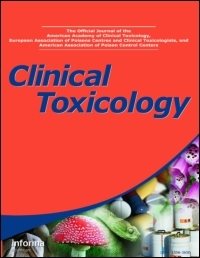Treatment of cocaine cardiovascular toxicity: a systematic review
8 de março de 20166min13


Taylor & Francis Online – Review: http://www.tandfonline.com/doi/abs/10.3109/15563650.2016.1142090
- DOI: 10.3109/15563650.2016.1142090
John R. Richardsa*, Dariush Garbera, Erik G. Laurina, Timothy E. Albertsonb, Robert W. Derleta, Ezra A. Amsterdamc, Kent R. Olsond, Edward A. Ramoskae & Richard A. Langef
- Received: 27 Aug 2015
- Accepted: 10 Jan 2016
- Published online: 26 Feb 2016
Abstract
Introduction: Cocaine abuse is a major worldwide health problem. Patients with acute cocaine toxicity presenting to the emergency department may require urgent treatment for tachycardia, dysrhythmia, hypertension, and coronary vasospasm, leading to pathological sequelae such as acute coronary syndrome, stroke, and death. Objective: The objective of this study is to review the current evidence for pharmacological treatment of cardiovascular toxicity resulting from cocaine abuse. Methods: MEDLINE, PsycINFO, Database of Abstracts of Reviews of Effects (DARE), OpenGrey, Google Scholar, and the Cochrane Library were searched from inception to November 2015. Articles on pharmacological treatment involving human subjects and cocaine were selected and reviewed. Evidence was graded using Oxford Centre for Evidence-Based Medicine guidelines. Treatment recommendations were compared to current American College of Cardiology/American Heart Association guidelines. Special attention was given to adverse drug events or treatment failure. The search resulted in 2376 articles with 120 eligible involving 2358 human subjects. Benzodiazepines and other GABA-active agents: There were five high-quality (CEBM Level I/II) studies, three retrospective (Level III), and 25 case series/reports (Level IV/V) supporting the use of benzodiazepines and other GABA-active agents in 234 subjects with eight treatment failures. Benzodiazepines may not always effectively mitigate tachycardia, hypertension, and vasospasm from cocaine toxicity. Calcium channel blockers: There were seven Level I/II, one Level III, and seven Level IV/V studies involving 107 subjects and one treatment failure. Calcium channel blockers may decrease hypertension and coronary vasospasm, but not necessarily tachycardia. Nitric oxide-mediated vasodilators: There were six Level I/II, one Level III, and 25 Level IV/V studies conducted in 246 subjects with 11 treatment failures and two adverse drug events. Nitroglycerin may lead to severe hypotension and reflex tachycardia. Alpha-adrenoceptor blocking drugs: There were two Level I studies and three case reports. Alpha-1 blockers may improve hypertension and vasospasm, but not tachycardia, although evidence is limited. Alpha-2-adrenoceptor agonists: There were two high-quality studies and one case report detailing the successful use of dexmedetomidine. Beta-blockers and β/α-blockers: There were nine Level I/II, seven Level III, and 34 Level IV/V studies of β-blockers, with 1744 subjects, seven adverse drug events, and three treatment failures. No adverse events were reported for use of combined β/α-blockers such as labetalol and carvedilol, which were effective in attenuating both hypertension and tachycardia. Antipsychotics: Seven Level I/II studies, three Level III studies, and seven Level IV/V case series and reports involving 168 subjects have been published. Antipsychotics may improve agitation and psychosis, but with inconsistent reduction in tachycardia and hypertension and risk of extrapyramidal adverse effects. Other agents: There was only one high level study of morphine, which reversed cocaine-induced coronary vasoconstriction but increased heart rate. Other agents reviewed included lidocaine, sodium bicarbonate, amiodarone, procainamide, propofol, intravenous lipid emulsion, propofol, and ketamine. Conclusions: High-quality evidence for pharmacological treatment of cocaine cardiovascular toxicity is limited but can guide acute management of associated tachycardia, dysrhythmia, hypertension, and coronary vasospasm. Future randomized prospective trials are needed to evaluate new agents and further define optimal treatment of cocaine-toxic patients.


